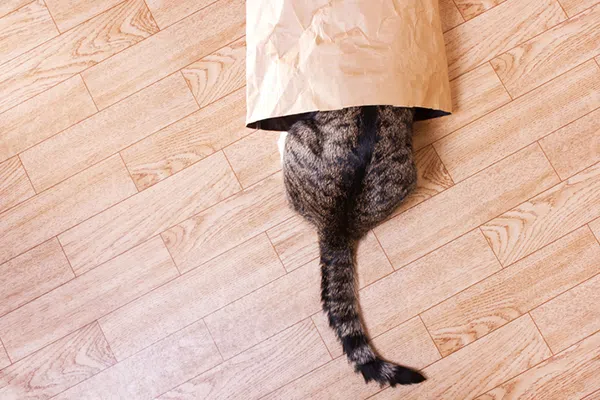You are at your home computer. Before you turn off the computer, you have to send another e-mail. Suddenly, Catby jumps onto your desk. He chews on documents, taps the floor with his pen, and tries to sit on the keyboard. Maybe you succeed in deleting important spreadsheets or restarting your laptop. Your kitten doesn’t realize it’s pissing you off. You may not be angry, but you are annoyed. On the flip side, humans actually do a lot of things that annoy cats. So, what are some signs that a cat is annoying?
Frustrated Cats and Their Tails
Before we explore why cats get annoyed, let’s take a look at some of the ways they show us they are annoyed. When cats are annoyed, their tails flick back and forth,” Catherine Haupt, the James Rau Professor of Behavioral Medicine at the American College of Veterinary Behavior and Professor Emerita. (professor emeritus) said.
Dr. Kelly C. Ballantyne, assistant clinical professor at the University of Illinois College of Veterinary Medicine, agrees with the importance of checking the tail.
Dr. Margaret Groen of Duke University says pet parents should listen to the signals their cats are giving off: “An annoyed cat is an annoyed cat. The cat begins to warn you to stop what you are doing. It will try to get away from the situation by wagging its tail or climbing on you with its paws. Again, its tail is telling you something!
Other Signs of Cat Annoyance

Can’t tell if your cat is annoyed? Look at her tail! Photography ©Alexmia | Thinkstock.
Cats will also use other ways to let you know they are annoyed. Meowing is one of them. An annoyed cat may meow low, but it still won’t hiss or spit,” says Dr. Ballantyne.
Subtle body language is another way to tell if a cat is frustrated. An irritated cat may crouch or rest its head on your shoulder. They may turn their head away from what’s annoying them or lean back,” says Dr. Ballantyne. An irritated cat’s ears may flop back slightly, but they won’t be completely flat against each other.
Is your cat irritable? A simple checklist
- Tail wagging (instead of thumping)
- Tries to move away from you
- Crouches or rests its head on your shoulder
- Ears pointing back
- A low purring sound
Frustrated vs. Angry Cats
Dr. Ballantyne says, “Frustrated cats are less fearful, anxious and stressed than aggressive cats. An irritated cat may still try to avoid direct conflict or fighting, but if the threat persists, the irritated cat may escalate to an aggressive cat.
“When a cat moves from frustration to anger,” explains Dr. Gruen, “you’ll see the cat’s tail begin to lash (or become very stiff and still) instead of wagging, and the ears will droop back. They will also make low growling or hissing noises. Very angry cats may assume a stiff or hunched posture, and their fur and tail may ‘fluff up’. In fact, cats give off many warning signs before annoyance turns into anger.”
If a cat thinks it’s angry, experts agree that the situation can be quickly alleviated by identifying the source of the stress and calming the cat down. The important thing is to get the cat out of the angry mood. Getting an angry cat into a tall cat tree, a litter box, or a quiet room before he becomes angry or aggressive can help ease his fear and anxiety.
What do cats hate the most?
According to Dr. Ballantyne, there are many reasons why cats get annoyed. She explains, “We often don’t understand what cats like. Many owners like to pet and cuddle their cats, but not all cats enjoy this physical intimacy. If you notice signs of irritation when petting or cuddling your cat, consider other behaviors that both you and your cat enjoy.”
If your cat is showing signs of annoyance, check for the following reasons
Are there stray cats outside?
Are other animals obstructing the cat’s access to food, water or toileting?
Are you treating your cat in a way it doesn’t like?
In addition to changing your own behavior, sometimes you need to play the role of referee. In multi-cat households, there is often hostility in the colony. Younger cats may annoy older cats by playing too rough, or one of the cats may be a bully. It is important to provide a quiet place for all cats.
Each cat has its own personality, so it’s important to pay attention to what annoys them. Some cats don’t like their tummies touched! Some cats don’t like to be picked up!
Tell us: what does your cat hate the most? How can you tell if your cat is annoyed?
Thumbnail: Photography © ollegN | Thinkstock.
By Denise LeBeau , January 2, 2018

